Hiking is a popular outdoor activity enjoyed by many people around the world. Not only is it a great way to get some fresh air and enjoy nature, but it is also an excellent form of exercise. Hiking is known to be a complete lower-body workout that engages various muscles in the legs, hips, and core.
One of the reasons why hiking is such a complete lower-body workout is because it involves walking on uneven terrain. This requires your legs to constantly adjust to changes in elevation, making it an excellent workout for your quads, hamstrings, and calves. Additionally, hiking uphill engages your glutes, which are essential for maintaining balance and stability.
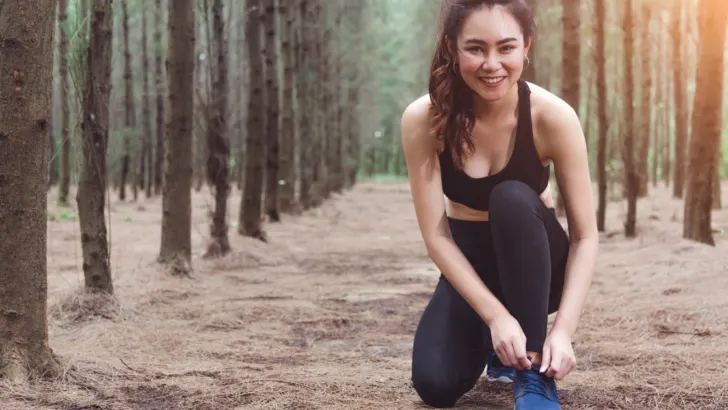
In conclusion, hiking is a great way to get some exercise and enjoy the outdoors. It is a complete lower-body workout that engages various muscles in the legs, hips, and core. Whether you are a seasoned hiker or just starting out, hiking is an excellent way to stay active and healthy.
Key Takeaways
- Hiking is a complete lower-body workout that engages various muscles in the legs, hips, and core.
- Walking on uneven terrain is one of the reasons why hiking is such a great workout for your quads, hamstrings, and calves.
- Hiking is a great way to stay active and healthy while enjoying the outdoors.
Why Hiking is a Complete Lower Body Workout?
As someone who loves hiking, I can confidently say that it is one of the best exercises for the lower body. Hiking offers a variety of benefits that can help to tone and strengthen the muscles in your legs, hips, and glutes. In this section, I will explore the reasons why hiking is such a complete lower-body workout.
The Benefits of Hiking for the Lower Body
As an ardent advocate of hiking and its multifaceted benefits, I am eager to shed light on the incredible impact it has on our physical well-being. At its core, hiking is a remarkable weight-bearing exercise that not only immerses us in the beauty of nature but also transforms our lower body in extraordinary ways.
Through the rhythmic strides along winding trails, our muscles are engaged and put to work, leading to the development of muscle mass and strength in our legs, glutes, and core. Each ascent and descent fuel a transformation within us, sculpting our lower body and bolstering our overall stability.

But the magic of hiking doesn’t end there; it extends its reach into the depths of our bones. The weight-bearing nature of this activity triggers a marvelous process of bone remodeling. As we navigate the terrains and carry the weight of our adventures, our bones respond with increased density, fortifying themselves to better support us on our journeys.
But the true heart of hiking lies in the profound impact it has on our cardiovascular health. This delightful activity is a dynamic workout for our heart and lungs, elevating our heart rate and improving our overall cardiovascular fitness. As we revel in the beauty of nature and challenge our bodies, our heart becomes stronger, pumping blood more efficiently and enhancing our circulation.

Furthermore, hiking’s transformative prowess extends its benevolent reach into the realm of disease prevention. By engaging in this invigorating activity, we actively reduce the risk of chronic diseases that plague modern society. Heart disease, stroke, and diabetes are no match for the power of hiking, as it bolsters our cardiovascular system, manages blood pressure, and regulates blood sugar levels.
Beyond the physical, hiking holds an embracing hand out to those suffering from joint pain and arthritis. This low-impact exercise is an oasis of relief, gently caring for our joints while delivering unparalleled benefits. As we wander amidst the beauty of nature, we find solace in the softness of the trail, which cradles our joints with each step.
Hiking Works the Glutes, Hamstrings, and Quads
One of the primary benefits of hiking is that it works the muscles in your glutes, hamstrings, and quads. When you hike uphill, you engage your glutes and hamstrings to push yourself up the incline. When you hike downhill, you engage your quads to control your descent and prevent your knees from taking too much impact.
The beauty of hiking lies in its ability to harmonize with nature while bestowing boundless gifts upon our lower body muscles. With each ascent up a picturesque incline, an exquisite symphony of muscles is activated, working in unison to propel us forward. Our glutes, those powerful engines, join forces with our steadfast hamstrings, forming an unstoppable alliance to conquer the uphill challenges that lay before us.
But the dance doesn’t end there. As we gracefully descend, a graceful balance is achieved, engaging another set of vital players in this intricate movement. Our quads, those pillars of stability, come to the forefront, embracing the responsibility of controlling our descent and safeguarding our knees from excessive impact.
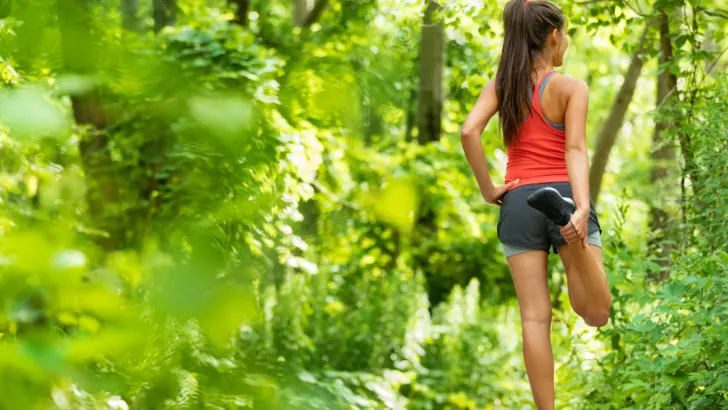
In this captivating choreography, our glutes, hamstrings, and quads take center stage, sculpting themselves with each undulating trail. The rhythm of hiking ensures that no muscle is left untouched, working diligently to build strength and resilience within us.
But beyond the mere physical aspect, the beauty of hiking is that it transcends into a soulful connection with the world around us. As we hike, we immerse ourselves in the wonders of nature, feeling the earth beneath our feet and breathing in the crisp, rejuvenating air. This sacred dance with nature not only strengthens our muscles but also revitalizes our spirit, creating a profound sense of harmony within.
Hiking Helps to Improve Balance and Coordination
Hiking on uneven terrain can help to improve your balance and coordination. When you hike on rocky or uneven trails, you have to constantly adjust your footing to avoid tripping or slipping. This can help to improve your proprioception, which is your body’s ability to sense its position in space.
Venturing onto the enchanting realm of uneven trails and rocky landscapes, an exquisite dance of balance and coordination commences. Each step becomes a carefully orchestrated movement, a delicate symphony of adjustments and adaptations. Our body instinctively senses the ever-changing environment, and with each nimble stride, we cultivate our proprioceptive prowess.
Proprioception, that remarkable sense of knowing where our body resides in space, is honed and refined with every twist and turn of the trail. As we navigate through the undulating terrain, our muscles, tendons, and ligaments work harmoniously to maintain stability, preventing trips and slips that threaten to disrupt our rhythm. The subtle art of balance finds its place in our hiking repertoire, teaching us to sway with the contours of the earth and find our equilibrium amidst nature’s ever-shifting canvas.
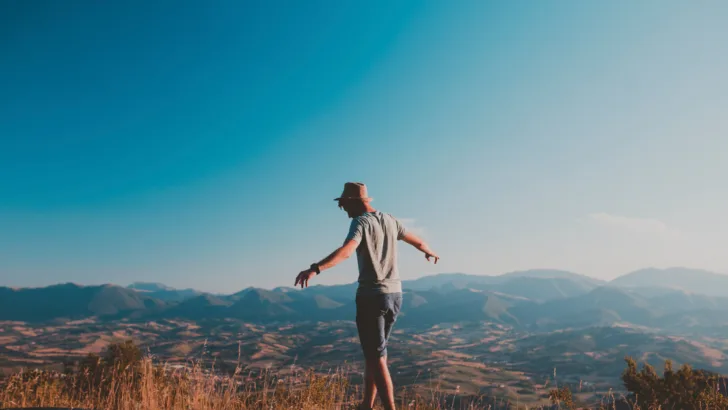
But the rewards of this dance extend far beyond the trail itself. The improved balance and coordination that we acquire on our hiking adventures transcend into our daily lives, enhancing our agility and preventing mishaps in various situations. Whether we traverse the rugged mountains or the bustling city streets, our newfound grace and poise guide our every move.
In the dance of hiking, balance and coordination fuse with the melody of nature, creating an exquisite symphony of movement. As we explore the untamed beauty around us, we also journey within, discovering the finesse of our body’s proprioceptive brilliance. And as we return from our expeditions, we carry the elegance of this dance with us, enriching our lives with newfound stability and grace.
Hiking Can Help to Reduce Pain and Inflammation in the Lower Back
Hiking can help to reduce pain and inflammation in the lower back by strengthening the muscles that support the spine. When you hike, you engage your core muscles to maintain your balance and stability. This can help to alleviate pressure on the lower back and reduce the risk of injury.
Embracing the beauty of nature, we embark on a journey that not only nurtures our spirit but also strengthens our core, easing the burden on our lower back and alleviating pain and inflammation.
As we traverse the scenic trails, a symphony of muscle engagement commences within our core. The intricate dance of balance and stability calls upon the muscles that support our spine, nurturing them with every step. Our core muscles become guardians of our posture, standing tall as sentinels against the forces that strain our lower back.

Through each undulating terrain, our body instinctively responds, activating the deep-seated stabilizers that embrace the spine. These muscles work tirelessly, distributing the weight and pressure evenly, sparing our lower back from undue stress. With every stride, we forge resilience within our core, fortifying it to withstand the trials of the journey.
The strengthening of our core is a blessing bestowed upon our lower back. As the core muscles grow stronger, they harmoniously collaborate to maintain proper alignment and posture. This alignment, in turn, alleviates pressure on the lower back, easing the burden of daily life and reducing the risk of inflammation and injury.
As we delve into the embrace of nature, our lower back rejoices in the symphony of relief. Pain and inflammation take a backseat, while comfort and freedom become our companions. The healing touch of hiking extends beyond the trail, infusing our daily lives with the gift of a pain-free and rejuvenated lower back.

In the realm of hiking, our core emerges as a fortress, shielding our lower back from the trials of the journey. The dance of balance and stability becomes a celebration of resilience and strength. With each step, we nurture our body and soul, crafting a harmonious symphony that soothes our lower back and kindles a renewed sense of vitality.
Hiking Can Help to Improve the Range of Motion in the Hips and Knees
Hiking can help to improve the range of motion in the hips and knees by stretching and strengthening the muscles that support these joints. When you hike, you engage your hip flexors and extensors to lift your legs up and down. This can help to improve the flexibility and mobility of your hips. Hiking can also help to strengthen the muscles that support your knees, which can reduce the risk of knee pain and injury.
The journey begins with the rhythmic engagement of our hip muscles. As we hike, our hip flexors and extensors come to life, gracefully lifting our legs up and down with each stride. This fluid movement serves as a gentle yet effective stretch for our hip joints, enhancing their flexibility and range of motion.

With each ascent and descent, our hips celebrate newfound mobility. The beautiful choreography of hiking encourages these joints to explore their full potential, freeing them from the constraints of a sedentary lifestyle. The result is a renewed sense of suppleness and freedom within our hips, allowing us to move with grace and ease.
Beyond the hips, our knees also bask in the bounty of hiking’s benefits. The trail bestows upon our knees a gift of strength and stability as we navigate the diverse terrain. The muscles that support our knees rise to the occasion, becoming steadfast guardians against injury and discomfort.
Through the rhythmic motion of hiking, we cultivate resilience within our knee joints. The gentle yet purposeful strides engage the quadriceps, hamstrings, and other knee-supporting muscles, fostering their strength and endurance. This newfound strength serves as a protective shield, reducing the risk of knee pain and injury in our daily lives.

As we immerse ourselves in the beauty of nature, the symphony of movement resonates deeply within our hips and knees. Hiking becomes an empowering journey of discovery, unraveling the layers of stiffness and limitation, and replacing them with newfound flexibility and strength.
Let us embark on the wondrous adventure of hiking, where our joints become a testament to the transformative power of movement. With every step, we unlock the gates to enhanced hip and knee mobility, embracing the full spectrum of motion. The trail becomes a playground for our joints, fostering strength and resilience that ripple into our daily lives.
Related Posts:
Why Hiking is a Complete Lower Body Workout
When it comes to getting a complete lower body workout, hiking is one of the best activities you can do. Here are some reasons why:
Hiking Involves a Variety of Movements That Work the Lower Body
Hiking is a multidimensional dance, where our legs take center stage as the principal performers. Each stride uphill demands the activation of our quadriceps and calves, propelling us forward with purpose and determination. The incline becomes a stage for our glutes and hamstrings to shine, igniting with strength and power to conquer the ascent.
Yet, as the trail meanders, we encounter a captivating variety of challenges. The terrain becomes a playground for our lower body, where stepping over rocks and roots calls upon our hip abductors and adductors to gracefully navigate the obstacles. With each lateral movement, we engage in a dance of balance and stability, sculpting the intricate muscles that support our hips.
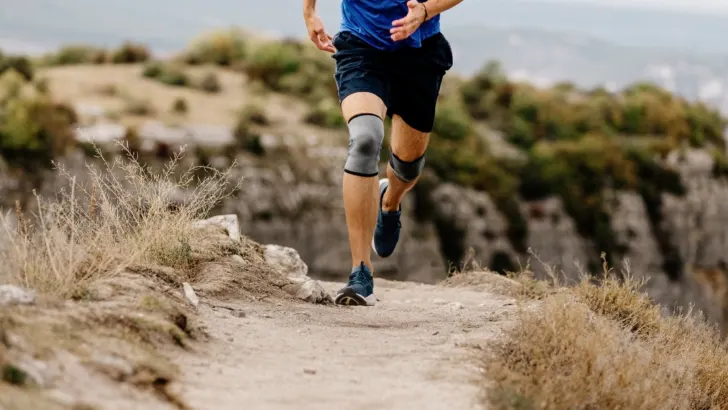
The trail’s unpredictability offers a masterclass in adaptability, as uneven terrain demands agility and coordination. Our legs embrace the ever-changing landscape, each step a testament to the dynamic interplay of muscles and joints. The lateral movements enhance our hip stability, while the ever-shifting ground calls upon the muscles surrounding our knees to provide unwavering support.
The symphony of lower-body movements unfolds with grace and efficiency, weaving a tapestry of strength, flexibility, and endurance. Hiking becomes a comprehensive workout for our legs, hips, and glutes, fostering resilience and vitality within each muscle group.
Hiking Can Be Customized to the Individual’s Fitness Level
One of the great things about hiking is that it can be customized to the individual’s fitness level. Whether you’re a beginner or an experienced hiker, you can choose a trail that is appropriate for your fitness level and gradually work your way up to more challenging hikes.
For those stepping onto the trail for the first time, the entry points are gentle and inviting. Trails of easy grades and moderate lengths welcome the curious and the cautious, providing a comforting introduction to the world of hiking. These pathways offer a chance to acclimate to the rhythm of the outdoors, to savor the natural beauty without the burden of overwhelming challenges.

As the journey progresses, and confidence begins to blossom, intermediate trails unveil their allure. With each step, the terrain subtly amplifies, inviting a greater engagement of the muscles and spirit. The transition is seamless, as hikers discover their inherent strength and resilience, emboldening them to embrace the vistas that await beyond the horizon.
Yet, the majesty of hiking lies in the boundless opportunities for growth. The trails, like a symphony, progress in intensity, beckoning the seasoned hiker to ascend to new heights. The more challenging paths, adorned with steeper inclines and extended distances, ignite a profound sense of accomplishment with each summit conquered.

Hiking listens to the whispers of the individual, offering a profound sense of connection and empowerment. It honors the uniqueness of each person’s journey, beckoning them to progress at their own pace, savor the moments of victory, and find solace in the tranquil beauty of the wilderness.
Hiking is a Low-Impact Activity That is Easy on the Joints
Unlike high-impact activities like running, hiking is a low-impact activity that is easy on the joints. This makes it a great option for people who want to get a good workout without putting too much stress on their joints.
Each step, a gentle caress upon the terrain, exudes grace and compassion for our joints. This nurturing quality makes hiking a perfect sanctuary for those seeking a rejuvenating workout without the strain that high-impact activities can bear.
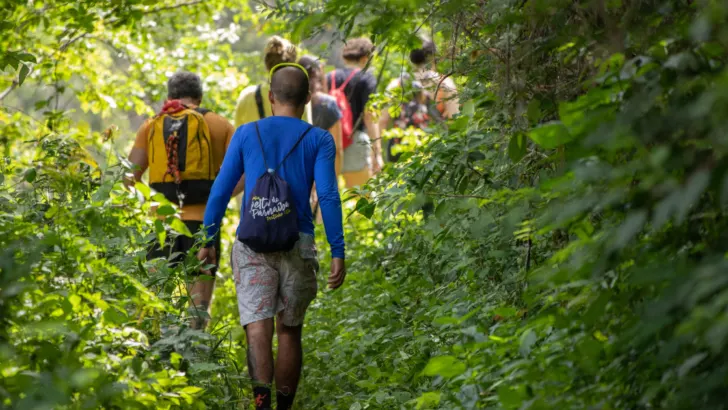
For those who’ve experienced the pounding of pavement during running or the repetitive stress of certain sports, hiking offers a refreshing respite. Its allure lies in the seamless fluidity of movement, the gentle sway of each stride, that resonates with the body’s innate wisdom. Our joints rejoice in the cushioned embrace of the earth, tenderly buoyed by the terrain as we navigate its gentle undulations.
Hiking grants the gift of motion without the burden of impact, like a comforting hug that whispers to our joints, “You are cherished and protected.” It’s an invitation to partake in a workout that honors the body’s needs, empowering us to embark on a journey of physical vitality and mental tranquility.

As a personal trainer and dedicated hiker, I’ve borne witness to the transformative power of low-impact movement. With each expedition, I’ve observed the radiant joy on the faces of those who’ve found solace in hiking’s gentle touch. The trails, like a tapestry of healing, unfurl a sanctuary of wellness where the body thrives, and the spirit soars.
Hiking Can Help to Build Muscle and Strength in the Lower Body
Hiking is a great way to build muscle and strength in the lower body. The constant uphill and downhill movement, as well as the uneven terrain, work the muscles in your legs, hips, and glutes, helping to build strength and improve muscle tone.
When we venture forth into the embrace of the wilderness, the gentle rhythm of uphill and downhill movement becomes a ballet for the lower body. With each ascent, our legs engage in a harmonious symphony of exertion, pushing against gravity to conquer the heights. And as we descend, the journey continues, requiring our muscles to delicately navigate the undulating terrain, gently guiding us through nature’s labyrinth.
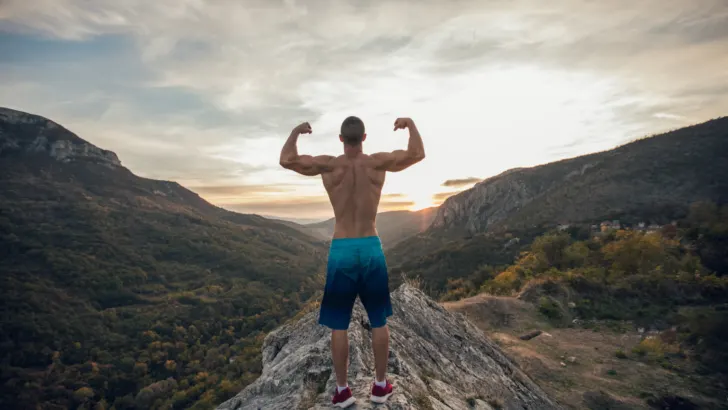
Throughout this captivating dance, our lower body muscles are stirred into action, called upon to bear the weight of our adventurous spirit. With each step, the glutes, hamstrings, and quadriceps diligently collaborate, each playing its unique role in this choreography of strength-building. It is as if the very act of hiking were a personal trainer, guiding us through a dynamic workout that sculpts and fortifies our lower body.
And so, as we wander amidst the majesty of nature, we find ourselves not only immersed in its beauty but also in the transformative journey of self-improvement. Hiking gifts us the power to shape our lower body, to forge muscle and tone with every venture along the trail. With each hike, we embark upon an odyssey of strength, one that culminates in a sense of accomplishment and renewed vigor.
As a hiker and fitness enthusiast, I’ve borne witness to the metamorphosis that occurs within the lower body through the art of hiking. It is a revelation that empowers us, making us keenly aware of the resilience and capabilities of our physical vessel. Our muscles become imbued with newfound vigor, and our strides become more assured, a testament to the strength we have harnessed.
Hiking Can Help to Burn Calories and Lose Weight
Hiking is a great way to burn calories and lose weight. Depending on the intensity of the hike and your body weight, you can burn anywhere from 300 to 600 calories per hour while hiking.
The captivating beauty of hiking lies not only in the breathtaking landscapes it unveils but also in the profound effect it has on our bodies. This enchanting activity becomes a gateway to torching calories and kindling the fire of weight loss. The intensity of the hike and our unique body weight are key elements that shape this celestial dance of energy expenditure.

Imagine traversing the trails, immersed in the embrace of nature’s grandeur, each step becoming a pulsating note in the symphony of calorie burning. As we scale the inclines, the cadence of our strides quickens, and our muscles engage in a harmonious synergy to ascend the heights. It is during these moments that the calorie-burning crescendo reaches its peak, a testament to the power of hiking as a calorie-torching marvel.
Yet, even amidst the serene beauty of the wilderness, the journey also reveals the art of balance. As we navigate the undulating terrain and savor the gentle descents, we continue to unravel the magic of calorie consumption. The rhythmic pace of our footsteps on flat surfaces becomes a serene interlude, allowing us to recharge before embarking on another crescendo of calorie burning.
And so, with each step, the number on the scale and the vitality of our spirits are touched by the transformative grace of hiking. It is a dance of calories, a symphony of weight loss that weaves through the trails, enchanting us with its harmony. Whether we choose a leisurely stroll or a brisk hike, we find ourselves immersed in the captivating world of calorie consumption, fostering a journey of weight loss that is as rewarding as it is empowering.

As an ardent admirer of hiking’s wonders, I have embraced the empowering embrace of calorie-burning through this enchanting activity. It is an invigorating revelation that fuels my passion for hiking, knowing that with each step, I am not only witnessing nature’s grandeur but also sculpting my own well-being. The trails become a sanctuary, a place where calorie consumption and weight loss coalesce with the beauty of the wilderness, leaving us nourished, rejuvenated, and one step closer to our wellness goals.
Hiking Can Help to Improve Cardiovascular Health
Hiking is a great way to improve cardiovascular health. The constant movement and elevation changes help to increase your heart rate and improve blood flow, which can help to reduce the risk of heart disease and other cardiovascular conditions.
The symphony of hiking’s cardiovascular benefits begins with the art of constant movement. Each step becomes a harmonious note, propelling us forward, and setting our hearts in motion. The gradual ascents and descents of the terrain add an enchanting cadence to this symphony, elevating our heart rates and amplifying the flow of life-giving blood throughout our bodies.

The magic of hiking lies in the fusion of physical exertion and the captivating beauty of nature. With every stride, our hearts respond, pumping more oxygen-rich blood to our muscles and organs. This intimate interplay between movement and cardiovascular response nurtures a cascade of health benefits, setting the stage for a healthier heart and a reduced risk of heart disease.
As we embark on this soul-nourishing journey through the wilderness, the transformative power of hiking unveils itself. The rhythmic ascent of hills challenges our hearts to work harder, increasing cardiac output, and strengthening our cardiovascular endurance. With each descent, our hearts experience a respite, a moment of recovery, before rekindling the symphony of cardiovascular health as we face the next incline.
As a dedicated hiker, I have witnessed the wonders of hiking’s cardiovascular benefits firsthand. The trails have become my sanctuary, a place where I am not only enchanted by nature’s beauty but also nurtured by the healing embrace of improved cardiovascular health. It is a profound journey of self-discovery, where each hike becomes a testament to the resilience and vitality of my heart.

The harmonious dance of hiking’s cardiovascular benefits extends beyond the trails. The effects linger, leaving us invigorated and empowered to embrace a heart-healthy lifestyle. With each hike, we pave the way for a stronger, more efficient cardiovascular system, reducing the risk of heart disease and other cardiovascular conditions.
Hiking Can Help to Reduce Stress and Improve Mental Health
In addition to the physical benefits, hiking can also help to reduce stress and improve mental health. Spending time in nature has been shown to have a calming effect on the mind, and the physical activity of hiking can also help to release endorphins, which can improve mood and reduce stress.
As we venture into nature’s realm, a tranquil serenity blankets our minds, washing away the burdens of daily life. The gentle rustle of leaves and the symphony of birdsong become a meditative chorus, soothing our restless thoughts and grounding us in the present moment. In this harmonious union of mind and nature, stress surrenders, and peace reigns.
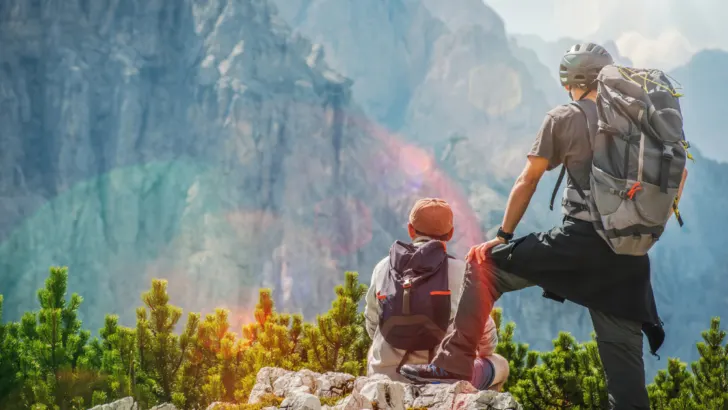
With each step, the rhythmic cadence of hiking transforms into a dance of mental rejuvenation. As we traverse the trails, the physical activity of hiking awakens a wondrous cascade of chemicals in our brains. Endorphins, the euphoric messengers, are set free, and a soothing balm of happiness envelops us. The weight of stress begins to lift, replaced by a sense of joy and tranquility that transcends the mundane.
As a seasoned hiker, I have experienced firsthand the profound impact of hiking on mental well-being. Amidst the grandeur of nature, I have found refuge from the cacophony of modern life. In the gentle embrace of the trails, I have discovered a sanctuary where my worries melt away, and my mind finds solace in the simple act of walking.
Hiking is not merely a physical activity; it is a gateway to mindfulness and a conduit to mental clarity. The bond between hiking and mental health is a harmonious embrace, one that empowers us to navigate life’s challenges with renewed resilience and a calm spirit. With each hike, we embark on a therapeutic journey, igniting a harmony of mind, body, and soul that we carry far beyond the trails.

The transformative alchemy of hiking’s mental benefits extends far beyond the physical realm. As we step into nature’s sanctuary, we unlock the door to inner peace and emotional balance. Stress recedes, and in its place, we find a renewed sense of self, a deeper appreciation for the world around us, and a clarity of mind that nourishes our souls.
Related Posts:
- Does Hiking Burn Belly Fat Muffin Tops to Mountain Tops
- Is Hiking an Aerobic Exercise? A Clear Answer
Conclusion
In conclusion, hiking is an excellent way to get a complete lower-body workout. Not only does it engage all of your lower body muscles, but it also provides a range of benefits for your overall health and well-being.
By hiking regularly, you can strengthen your muscles, increase your endurance, and improve your cardiovascular health. Additionally, hiking can be a great way to reduce stress and anxiety, connect with nature, and enjoy the great outdoors.
Whether you’re a seasoned hiker or just starting out, there are a few things to keep in mind to ensure that you get the most out of your hiking workouts. First, make sure to wear comfortable and supportive footwear, as well as appropriate clothing for the weather conditions. Second, stay hydrated by drinking plenty of water before, during, and after your hike. Finally, listen to your body and take breaks as needed to prevent injury and avoid overexertion.
Overall, hiking is a great way to stay active, improve your fitness, and enjoy the beauty of nature. So why not lace up your hiking boots and hit the trails today?
Related Posts:
- American Hiking Society: https://americanhiking.org/
- The American Heart Association: https://www.heart.org/
- Mayo Clinic: https://www.mayoclinic.org/
- Healthline: https://www.healthline.com/
- Verywell Fit: https://www.verywellfit.com/
Frequently Asked Questions
What are the benefits of hiking for your lower body?
Hiking is a great way to exercise your lower body. It can help to strengthen your legs, glutes, calves, and core muscles. Hiking can also help to improve your balance and coordination.
How does hiking compare to other lower-body workouts?
Hiking is a unique form of exercise that can provide a complete lower-body workout. Compared to other lower-body workouts like running or cycling, hiking engages more muscles and requires more balance and coordination.
Can hiking alone provide a complete lower-body workout?
Yes, hiking alone can provide a complete lower-body workout. However, it is important to vary the terrain and incline of your hikes to challenge your muscles and prevent plateauing.
What muscles are targeted during a hike?
During a hike, your hamstrings, quadriceps, glutes, calves, and hip muscles are all targeted. Your core muscles are also engaged to help maintain balance and stability.
How does hiking improve lower body strength and endurance?
Hiking can improve lower body strength and endurance by challenging your muscles with varying terrain and inclines. Over time, this can lead to increased muscle strength and endurance.
What are some tips for maximizing the lower body workout during a hike?
To maximize the lower body workout during a hike, try to vary the terrain and incline of your hikes. Incorporating hills, stairs, and uneven terrain can help to challenge your muscles and prevent plateauing. Additionally, maintaining proper form and engaging your core muscles can help to improve balance and stability.
